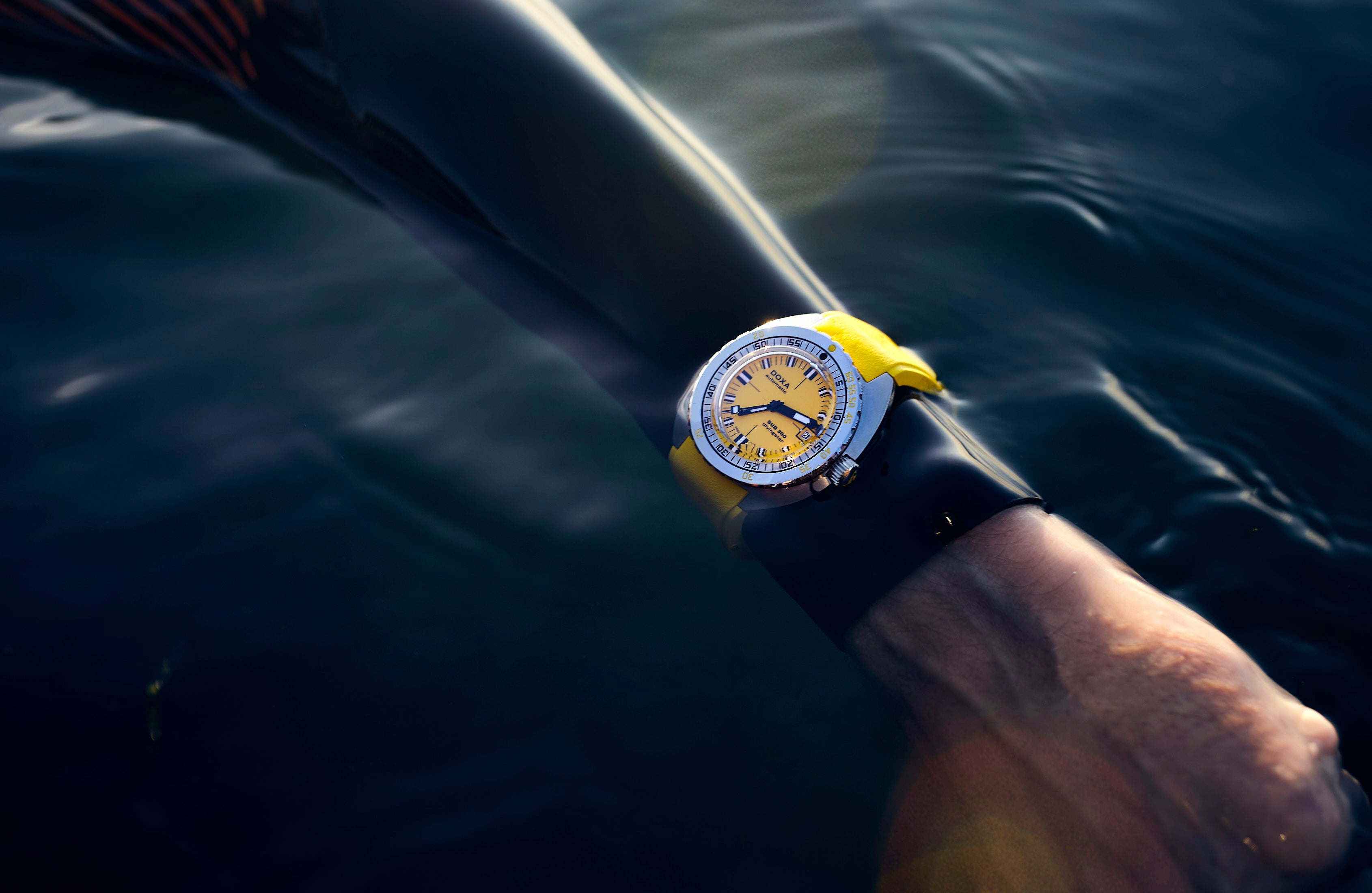
DOXA DIVE GUIDE - The best dive spots: our top picks
At DOXA, we are perfectly placed to know that there are an almost infinite number of divine places to dive. If we are honest, there are probably too many for us to list exhaustively, unless we were to dedicate a lengthy tome to the subject! This is why we have decided to give you a small selection of our favourites, based on what we – and you – love best.

An incredible diversity of ocean life: The Galápagos Islands
Diving in the Galápagos is a unique experience in many respects. Three major ocean currents meet here, making the diving conditions in this archipelago utterly unique. There is, quite simply, no other dive spot to rival the richness found here!
Here, you can dive alongside the unique and enormous oceanic sunfish, with giant Pacific manta rays and enormous schools of eagle, cownose and mobula rays. Elsewhere, you can frolic in the water with dozens of Galápagos sea lions or even, if you choose, dive in the shallows with the endemic marine iguanas. Jacques-Yves Cousteau - who himself wore a DOXA SUB -devoted an entire episode to these aquatic animals. If you are lucky, you may even see penguins swimming underwater!
Nevertheless, whilst all of these dive experiences are certainly amazing, there are plenty of other reasons why divers love to come to the Galápagos. Most of them come to dive around the two most remote islands, Wolf and Darwin, which play host to some of the most iconic dive sites in the world.
Depending on the season, you can find the most impressive fauna here, including the largest whale sharks ever recorded, who spend their time swimming in the currents around Darwin. Imagine diving alongside an animal the size of a bus! Something to be experienced once in your lifetime, no question. And for those who prefer to come during the warmer months, there are large schools of hammerhead sharks to be discovered. The Galápagos Islands provide the best aquatic theatre in the world for observing these sharks up close.

In short, the Galápagos Islands have everything an underwater fauna enthusiast could possibly want, with many species that are found nowhere else. Undoubtedly the number one dream destination for any diver!
For history lovers and wreck hunters – Chuuk Lagoon
Chuuk Lagoon (previously Truk Atoll) is an isolated destination in the Pacific, within the Federated States of Micronesia, and one of the best wreck diving destination the world. It is a naturally protected site at the heart of a coral atoll, where a large part of the Japanese fleet was stationed during the Second World War. After two deadly attacks, many of the vessels were sunk and came to rest on the seabed. Diving to explore an artificial wreck is certainly an experience, but it is nothing compared to diving to an authentic ship sunk in the line of duty, a true living witness to history.

Of course, this site is overflowing with this history, an important aspect for a company such as ours, founded in 1889. History and heritage are a fundamental part of our DNA, which is why we feel we had to include this site on our list of the best dive spots, rich as it is with historical impact.
Today, most of these wrecks are now covered in brightly coloured coral, bursting with life. They are easy to reach from cruise ships or you can book a day trip from the shore. Many of the wrecks are shallow enough to be explored by novice divers, but there are also several vessels resting at much greater depths which will delight the more experienced technical diver.
Caverns and caves of Mexico
Contrary to received wisdom, some of the best dive sites are easy to access... even without a boat! The cenotes – freshwater caverns and caves – of Mexico are an incredible underwater playground which truly have no equal anywhere else in the world. The site is a long way from the Caribbean coast, lying at the heart of the jungle.
For once, the star here is not the fauna, but the spectacular landscapes and the experience of accessing and exploring them. These underwater limestone caverns and grottos are home to incredible stalactites and stalagmites. The waters are clear and the sun's rays penetrate deep, giving the illusion of being suspended between two worlds, at the heart of a veritable underwater cathedral.

There are no particular technical skills required. Anyone can dive here, since there are a number of cenotes which are accessible to open water divers. By following a certified guide and ensuring you respect all the diving rules that you already know, you'll be able to enjoy a unique diving experience with no need for special training or equipment.
However, once outside the limits of the cavern, you'll find yourself transported to the world of cave diving. Only Cave diving certified divers are permitted to explore here, using specific equipment. No natural light can reach these parts of the cave. The passages are sometimes so narrow that divers need to remove equipment in order to squeeze through. This is not for the faint-hearted, as the risks inherent in this kind of diving are extremely high, but these risks come with incredible rewards. Magnificent caves and caverns are waiting to be explored. Very few before you have ever experienced them, and very few will follow... In the all-encompassing darkness of these caves, what colour could be a better guide than the vibrant orange of the DOXA SUB Professional?
Diving into a rainbow of colour – Raja Ampat
We can't deny it... At DOXA, we love colour! We love to explore the broadest spectrum of colour, and that is why we have selected the site of Raja Ampat, which is probably home to the most biodiverse coral reefs in the world. If your underwater quest is for brightly coloured fish and varieties of coral, then you simply must visit Raja Ampat.

This archipelago of small jungle islands is a part of Indonesia. To reach it, you need to travel by liveaboard diving boats, ships or vessels. It is a truly remote site, but it is this remoteness that has protected it from the adverse effects of traditional dive tourism. This means it is possible to explore an almost untouched reef. This quality, so rare nowadays, has allowed an incredible diversity of fish, coral, and small and large marine species to flourish in great numbers. And, as it is such a healthy, well-protected reef, sharks and manta rays flock here to feed. It is hard to describe the indescribable, but any serious diver should aim to dive at Raja Ampat at least once. Just to be able to resurface and say: I have just dived to the most stunning underwater habitat in the world.
Thanks to Barna Takats - @barnatakats

